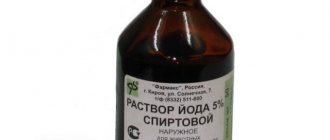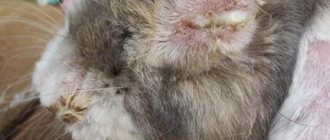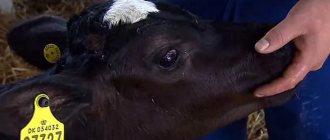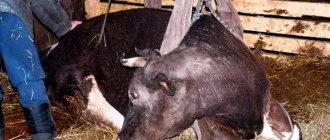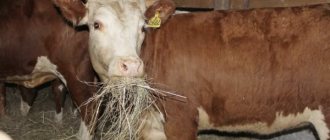Very often, animal owners and lovers have to become a veterinarian for a while. It is not always possible to take the animal to the clinic, so owners have to master some therapeutic and preventive procedures themselves, for example, measuring temperature, giving anthelmintics, injecting vitamins, etc. Here we will try to tell you how all this can be done.
Before any procedure, the animal must be securely restrained. The easiest way to do it is with an assistant.
How to give medications to rabbits by mouth?
Unfortunately, giving pills to rodents and rabbits is theoretically possible, but in practice it is not a very rewarding task.
Rabbits have a very small oral cavity and most often cannot push a tablet into their mouth on the root of their tongue, like cats. In addition, cunning rabbits love to put pills under their tongue or behind their cheeks and look at you for a long time with an angelic look and a pill in their mouth. In an hour you will be able to find it in the litter. The same applies to other small animals.
A whole tablet can only be set using a tablet feeder. This is a very convenient device that resembles a syringe; unfortunately, it is very rarely found in pet stores and veterinary pharmacies. It is easier to buy drugs in the form of a suspension. The tablets can be crushed and administered with a syringe without a needle.
To put the syringe into your mouth, you need to open it slightly by pressing on the toothless space behind the incisors. Place the end of the syringe on the root of the tongue. You can tilt the patient's head slightly to prevent the medicine from leaking out. Important: do not tilt the animal’s head back too much and drink the drug slowly, in small portions, so that it does not choke.
You should not mix the drug into food, because rodents and rabbits have a well-developed sense of smell and very easily recognize a dirty trick.
How to give injections to rabbits?
You need to draw the drug into a syringe and prepare a cotton swab with a disinfectant: iodine, 70% alcohol solution or medical solution. You can also use any alcohol-containing herbal tincture, for example, calendula.
If you don’t have anything on hand, you can use vodka, but keep in mind that disinfection will be worse, since it has a low alcohol content. It is advisable to cut off the fur at the future injection site with scissors. The skin is wiped with a disinfectant before and after the injection.
Subcutaneous injections are made into the skin area between the shoulder blades - there are fewer nerve endings and well-developed subcutaneous tissue, rich in blood vessels. At this site, injections are painless and the drug is well absorbed into the blood. After disinfection, the skin is pulled back with the left hand to form a triangular fold. With the right hand, a syringe is injected into the base of the fold, being careful not to pierce it through, and a medicine or vaccine is injected.
Veterinarian at home 24 hours a day.
Who carries out the procedure and how
A spinal block for a hernia should only be done in a medical facility. The procedure can only be entrusted to a highly qualified neurologist. Any mistake can immobilize the patient, damage nerves, cause tremors, spinal cord ischemia, and other problems.
The blockade is performed by a neurologist after examining the patient.
Before the procedure, you must undergo a full medical examination or at least make sure there are no contraindications. Be sure to tell your doctor if you have any illness. There is no need to prepare for blockade of a herniated disc. The main condition is not to eat 3 hours before the injection.
The procedure goes like this:
- The patient takes the starting position (depending on the type of injection).
- The doctor makes a solution, draws it into a syringe, and feels the spinal column and nearby tissues.
- He slowly injects the medicine into the desired area, and treats the injection site with an antiseptic.
The procedure is quick, the pain disappears within 5 minutes. The effect lasts from several hours to a couple of days, depending on the type of medicine.
Where is the injection given?
The doctor chooses the injection site, taking into account the location of the intervertebral hernia:
- Paravertebral
- the injection is not injected into the spine, but near it into the area that directly interacts with the affected area (segmental blockade). This can be subcutaneous, muscular, radicular and other types of injections. - Vertebral
- the drug is administered intradermally, into the area of the vertebral body or between the processes to a depth of 2-4 cm. - Intraosseous
- injection into the bony protrusions, processes of the thoracic, cervical, lumbar and sacral vertebrae. - Spinal
- the needle is inserted into the subarachnoid space, at the level of the nerve roots.
A complex injection is the injection of medication into the epidural space, located between the hard shell of the spinal cord and the periosteum of the vertebrae. Epidural blockade of intervertebral hernia includes:
- intralaminar anesthesia
- the needle enters the central axis of the spinal column between the processes; - transforaminal injection
- the medicine is administered through the foraminal opening, from which nerve fibers and veins emerge.
Intramuscular injections in rabbits.
Before making an intramuscular injection, you must carefully shake out air bubbles from the collected medicinal substance, since they may subsequently cause inflammation at the injection site.
The syringe is lifted with the needle up and tapped on it so that the air bubble stands opposite the hole of the needle, then it is simply squeezed out of the syringe. Disinfect the skin. Intramuscular injections are most often given into the upper and posterior quarter of the thigh, the most fleshy part. The needle is inserted perpendicular to the surface of the thigh. The needle is inserted to such a depth that allows the drug to be injected directly into the thickness of the muscles.
How to apply eye drops to rabbits?
Your veterinarian should prescribe suitable drops or ointment for you. Even if it is mild conjunctivitis, you should contact your veterinarian for a prescription. There are quite a lot of eye diseases, they all have different origins and each requires its own range of medications, which can only be selected with a detailed study.
For example, for traumatic conjunctivitis you will need drops or ointment with antibiotics, for allergic conjunctivitis - with dexamethasone, for viral conjunctivitis - with immunostimulants. Almost all drops must be instilled frequently - 4-5 times a day, otherwise the effect will be weak. Tear fluid from the eyes quickly washes away medications. It is also necessary to adhere to the course of treatment indicated in the instructions. It is most convenient for rodents and rabbits to instill drops as shown in the photo.
To instill drops, fix the head in a horizontal position so that the affected eye is on top. Use your fingers to slightly pull back the upper and lower eyelids and drop directly onto the eyeball. Then the eyelids are released and the animal is allowed to “blink.” Instilling drops into the conjunctival sac, as we do for ourselves or dogs, will not work for small animals, since they have small eyelids.
What diseases are rabbits vaccinated against?
For long-eared rodents, infectious diseases and parasitic infections that are practically untreatable pose a mortal danger. These include:
- myxomatosis;
- viral hemorrhagic disease (VHD);
- rabies;
- listeriosis;
- pasteurellosis;
- salmonellosis.
Listeriosis
Vaccinations against the first two diseases on the list are mandatory, that is, they are given to all rabbits without exception. For other diseases, the vaccine is administered in the event of an epidemic or at will.
Mandatory vaccinations
Myxomatosis is transmitted by airborne droplets from one individual to another with lightning speed. The virus can also enter the body through food or through the skin through an insect bite. No treatment has been developed for this disease; pets die a few days after infection in 70–100% of cases. Symptoms of myxomatosis:
- oppression;
- bumps on the head and body;
- refusal of food;
- heat;
- purulent discharge from the eyes and nose.
VGBV is a highly contagious infectious disease in which the virus infects the internal organs of the animal, causing hemorrhages in them. After infection, the disease proceeds latently for 2–3 days, after which 2 scenarios are possible:
- Pets die very quickly for no apparent reason, making several convulsive movements. The owner of the rabbits does not observe any signs of illness, but simply discovers their corpses during the next distribution of food.
- The animals become irritable, refuse to eat, and have seizures. A plaintive squeak is heard in the rabbitry. After 2 days the animals die. In most individuals, ichor is secreted from the nasal passages before death.
Optional vaccinations
Rabies vaccination is not included in the list of mandatory ones, but it is advisable to get it even for pets who live at home. The virus that causes this disease is dangerous to humans. It is transmitted through the bite of an infected individual. If a rabbit is attacked by a dog or wild animal with rabies, it will become infected in 100% of cases.
Attention! There is no cure for rabies; this disease is deadly. You can protect your pets and yourself only through preventive vaccination.
If there is a threat of the spread of listeriosis or pasteurellosis, the district veterinary service recommends vaccinating pets against these infections. Vaccination against the causative agents of these diseases is mandatory for animals that participate in exhibitions and other events.
Rabbits at the exhibition
How to treat rabbits with sprays and aerosols?
If you are treating with a drug against external parasites in the above form, then it is best to do this either outside or in a well-ventilated area and it is better to get gloves.
If the drug needs to be applied to the entire surface of the animal’s body. The patient is placed on a flat surface, and the little one can be held in his hand. The spray bottle must be shaken before use. During processing, it is held vertically and at a distance from the surface of the body, usually 15-20 cm. Sprayed against the grain. When processing the head, you need to cover your ears and eyes with your fingers. It is useful and convenient to use a massage brush during spraying so that the drug is distributed more evenly. Dosages for sprays and aerosols are usually indicated in the instructions: they are determined by the number of presses per unit surface area of the body. Here you can note that the inconvenience of dosages is one of the main disadvantages when working with such drugs. If they are not indicated, then spray until the coat is lightly moistened. Sometimes it is necessary to hold the animal until the medicinal substance dries on the fur. Some drugs, for example, against external parasites or antifungals, when licked when wet, have far from the most beneficial effect on health; when dried, their toxicity decreases.
How should rabbits be vaccinated?
Remember! Vaccination is carried out according to the instructions for use of the vaccine. Vaccines do not cure diseases; they are intended to prevent diseases.
After vaccination, rabbits must be observed for two days (monitor body temperature (let me remind you: the normal body temperature of a rabbit is 38.5-39.5 ° C), behavior, and mood of the animals).
Before vaccinating rabbits, the day before it is necessary to treat the animals against internal (helminths) and external (fleas, lice, if any) parasites. It turns out that the presence of helminths in rabbits greatly reduces the effectiveness of the vaccine.
Within 12-14 days after vaccination, rabbits are not recommended to suddenly change their diet, or treat animals against parasites. During this period, it is recommended to protect rabbits from all stress.
The first vaccination for rabbits is carried out at the age of 1.5-2 months. By this time, the rabbits lose their active (maternal) immunity and become defenseless against diseases.
Vaccinating rabbits is undoubtedly worthwhile. But in order for rabbits not to get sick, it is still necessary to carry out measures aimed at preventing rabbit diseases, and even better - to prevent the occurrence of diseases.
